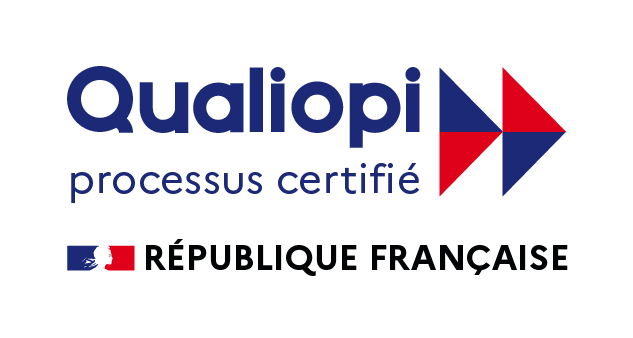520 000. This is the number of resignations in France per quarter in 2022, 17% more than in 2019, according to the Direction de l’Animation de la Recherche, des Études et des Statistiques.¹ (DARES). This is an all-time high since 2008, and perfectly illustrates the “Great Resignation” phenomenon affecting more and more companies in France. Despite their best efforts, companies are struggling to address the issues of disengagement, mental health and talent retention.
Why is it so difficult to retain them? How can we avoid talent resignation and find the right motivational levers to re-engage them on a long-term basis? To answer these questions, we have studied the factors behind Motivation employees. Using data from our customer experiments in virtual reality and serious neuroscientific games, we have produced an infographic highlighting the various factors that demotivate talent, as well as the action levers for remedying them.
Download the infographic on talent motivation

Motivation: A lever for well-being, performance and talent retention
To avoid the mass resignation of talent, you need to boost motivation! Motivation is strongly correlated with greater professional fulfillment ( 0,67)², better peer collaboration (0,59)², and greater creativity (0,74)².
So, the less motivated you are, the less innovative you are, the less you fit into the team, and the less fulfilled you are. You feel less involved, and you don’t take responsibility. This is what our data shows, placing hierarchical level as a major factor in an individual’s degree of motivation…
Employees are 5x less motivated than managers
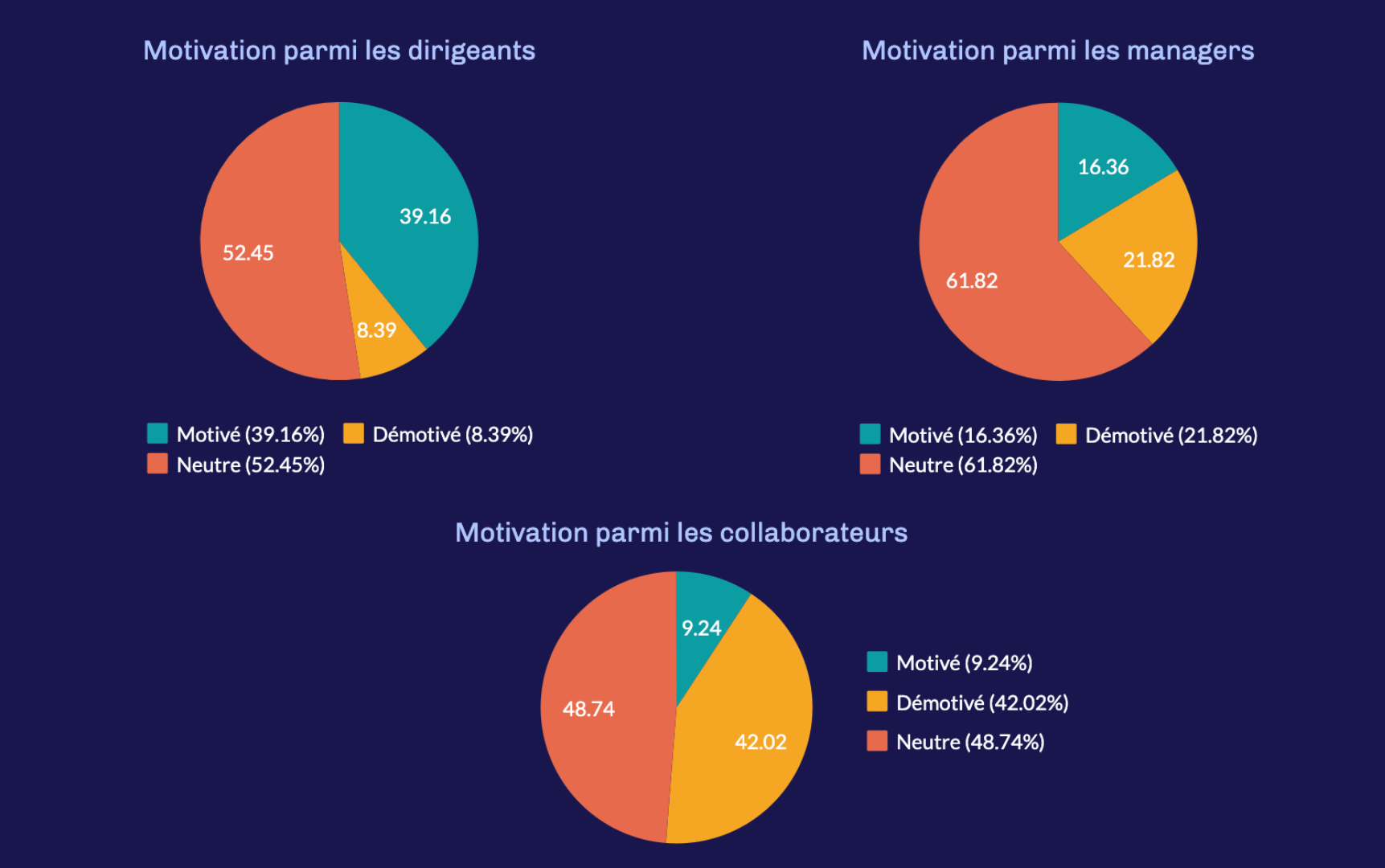
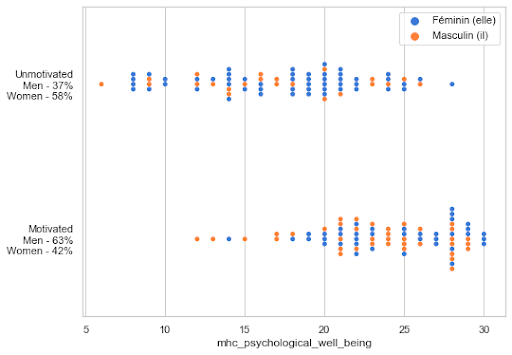
Our data showed that hierarchical level plays a key role in motivation. For example, 39% of managers are motivated by their work, compared 16% of managers and only 9% of employees.
We also find that women are less motivated than men. Yet gender has little effect on motivation. Rather, this difference can be explained by the fact that women occupy more associate positions than top management positions: 51% of female employees, versus 25% of employees. Conversely, 58% of managers are women, compared with 37% female managers.
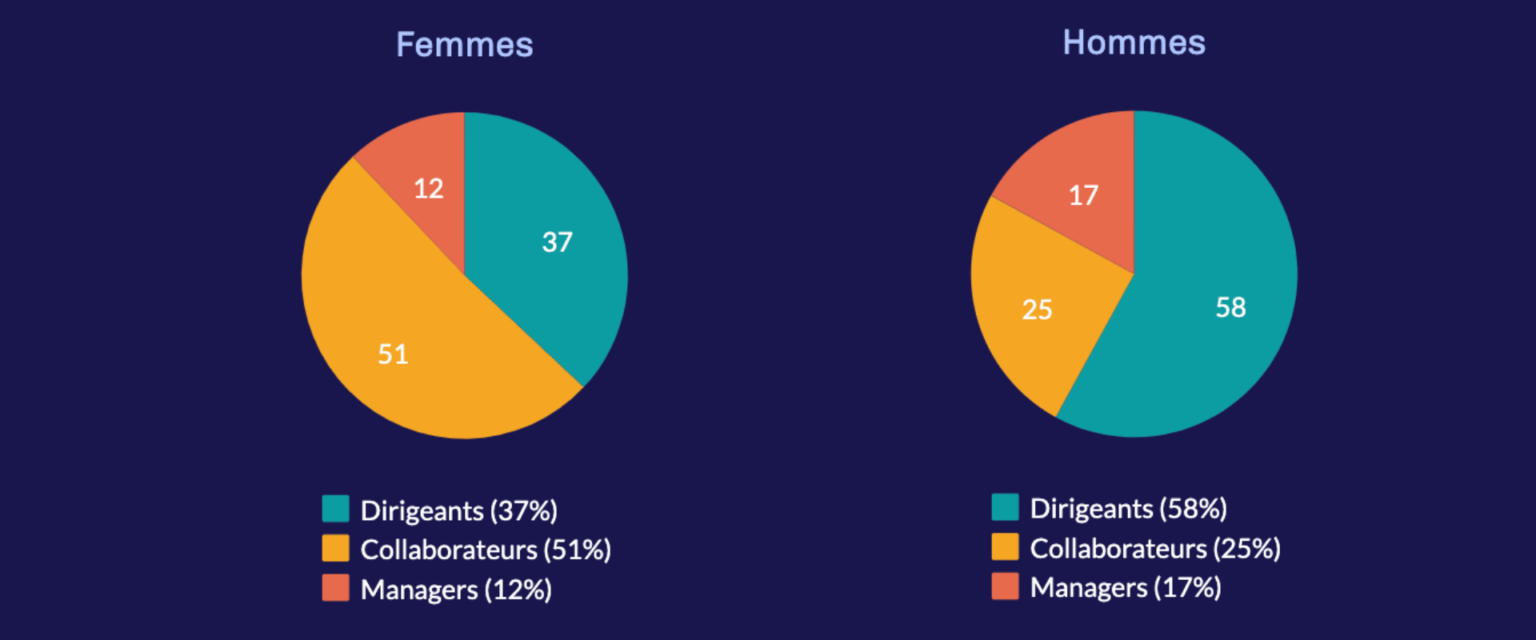
How can I re-motivate my talents? The levers of intrinsic motivation.
What is intrinsic motivation?
There are 2 types of motivation:
– Extrinsic motivation: This is motivation by the reward of an activity (remuneration, promotion), or by the fear of sanctions. It works in the short term for simple, fast-paced tasks.
– Intrinsic motivation: The one we’re interested in here to re-engage our talents. It’s motivation by the activity itself; the one that excites us and is aligned with our values. It leads to long-term commitment.
Intrinsic motivation falls within the scope of self-determination theory, which describes it as enabling us to adopt a posture in which we become masters of our own lives. This explains why individuals are all the more likely to perform when they act in congruence with their personal values and objectives. In the laboratory, we have observed that giving a reward (and thus activating extrinsic motivation) can even reduce performance on a complex task.
In this context, the management of remuneration could be rethought: it is not a priori relevant to give a bonus when the aim is to motivate for a complex task. On the other hand, it is perfectly appropriate to do so when the aim is to increase motivation for a simple task that can be carried out quickly.
To find out more:
– Individual bonuses: how to prevent employees from feeling manipulated?
– TED talk: the puzzle of motivation
How can neuroscience help you develop it?
To boost intrinsic motivation, three basic psychological needs must be met:
- Feeling competent > It’s all about celebrating progress and success, so that people feel useful and competent. To achieve this, you need to develop a culture of feedback within your team.
- The need for autonomy > Employees need to be trained and tasks delegated. They need to feel free and in charge of their own actions.
- The need for social relations > Employees need to feel supported by their colleagues and managers. It’s important to set aside time for informal team-building.
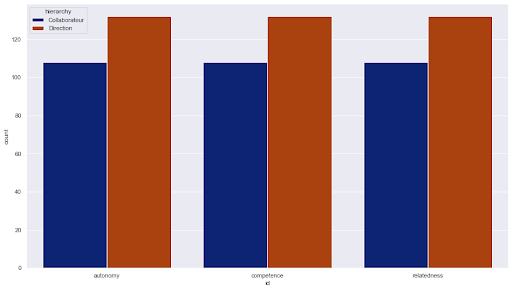
Once again, we observe that these three needs are more developed among managers than among employees. So there’s a real opportunity here to motivate employees and help them play an active role in their company’s transformation.
At Open Mindwe set up programs combining virtual reality, serious games and neuroscience to develop the well-being, motivation and performance of your managers and employees. Our training programs on key human competencies such as stress and emotion management, adapting to changing environments, collaboration and authentic management, etc. enable you to restore your talents’ confidence and develop their full potential!
¹ https://dares.travail-emploi.gouv.fr/publication/la-france-vit-elle-une-grande-demission² Correlation coefficient between motivation and the other variables in the model. A correlation coefficient of >0.5 is interpreted as a strong correlation.

